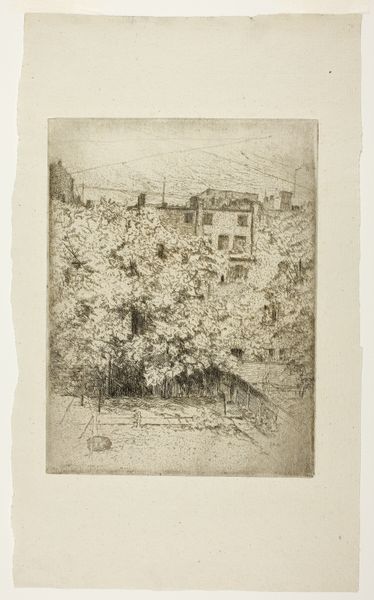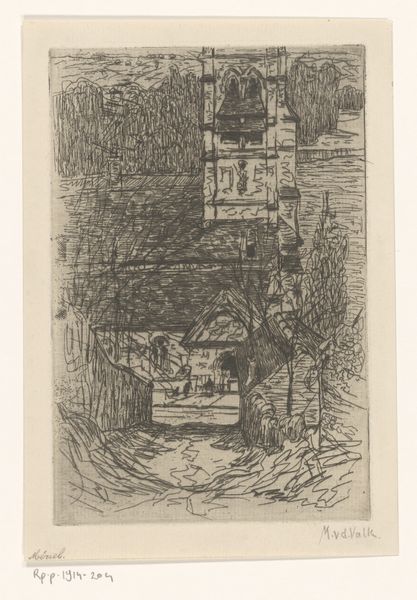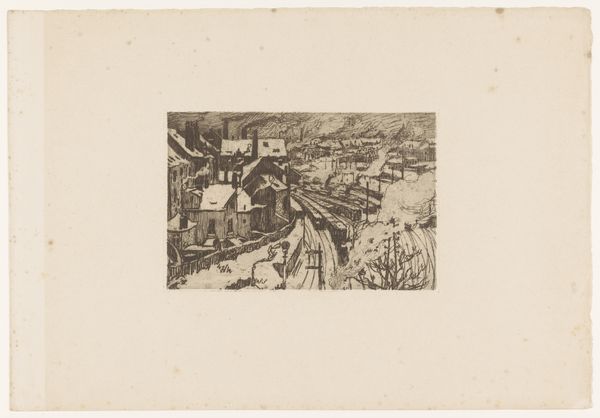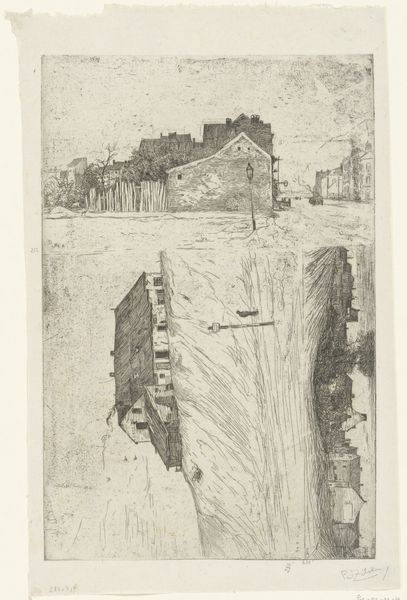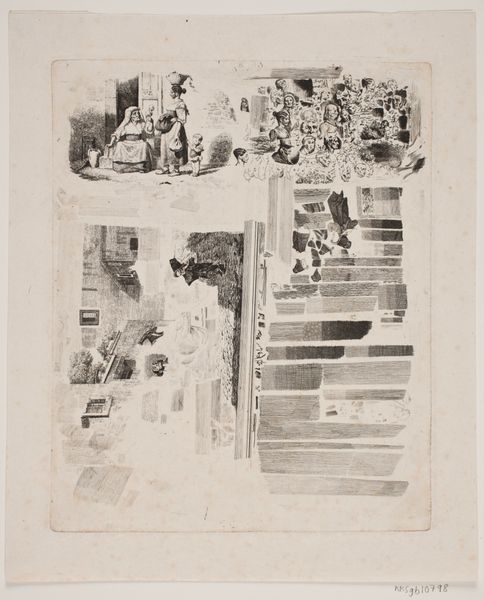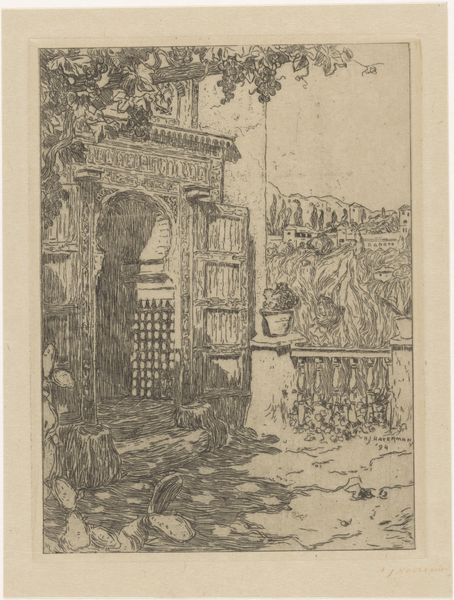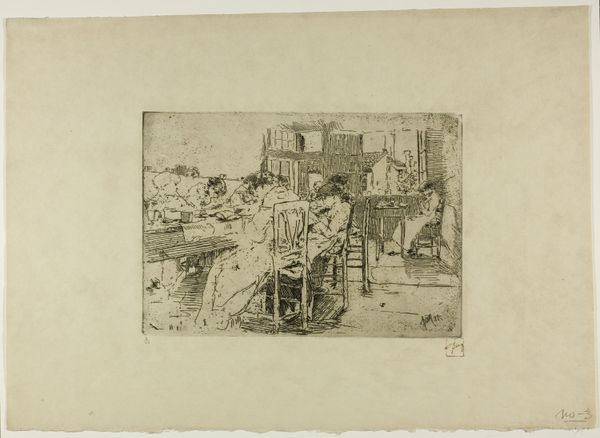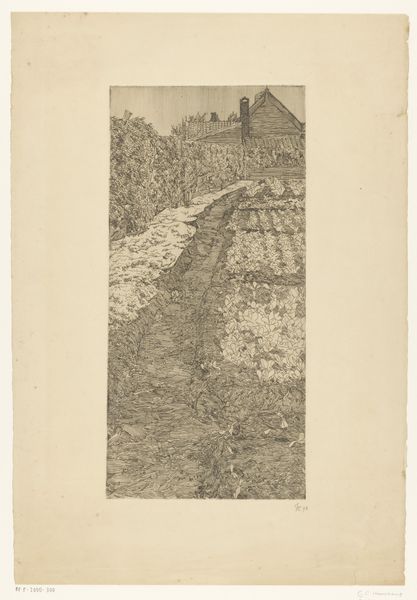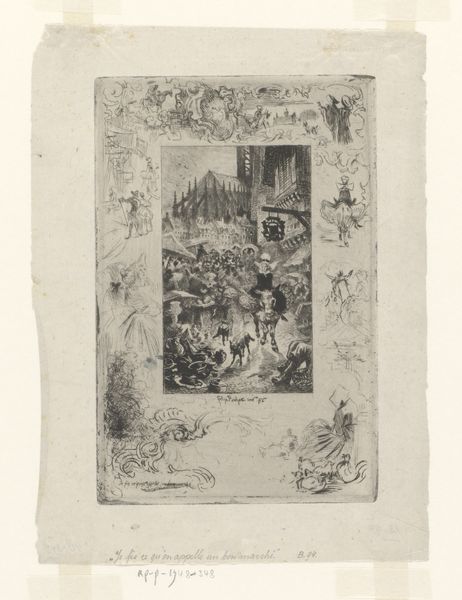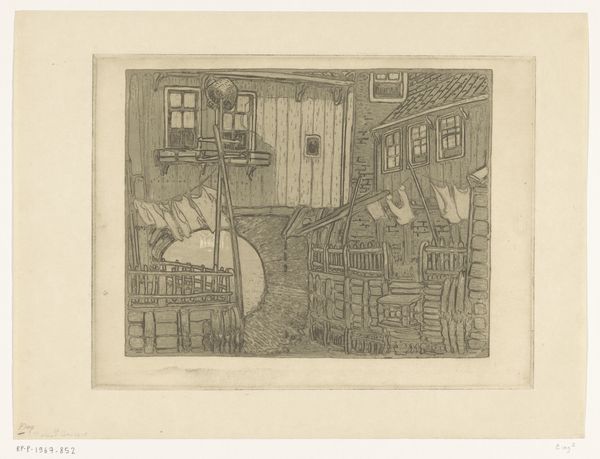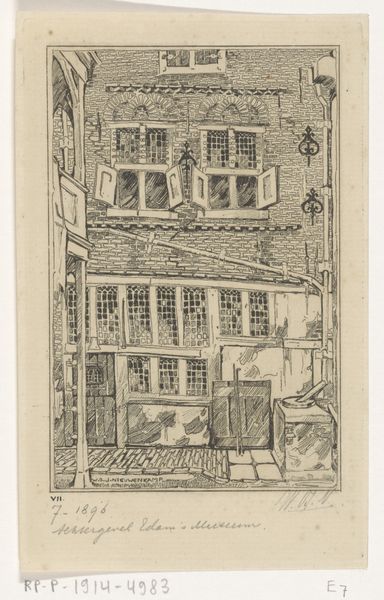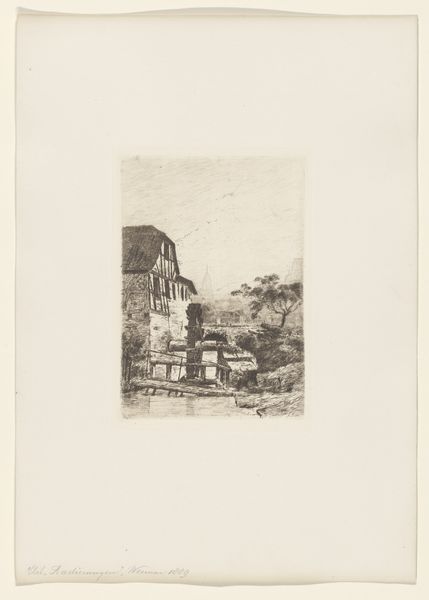
drawing, print, etching, graphite
#
drawing
# print
#
etching
#
landscape
#
etching
#
graphite
#
cityscape
#
realism
Dimensions: height 217 mm, width 133 mm
Copyright: Rijks Museum: Open Domain
Curator: Here we have Willem de Zwart's etching and graphite drawing, "Spelende kinderen aan het water," created around 1895 or 1896. What strikes you first about it? Editor: It's intensely atmospheric. There's a dreamlike quality, partially due to the muted palette and dense strokes, which gives it an unfinished look, perhaps intentional. The stark lines are both captivating and unsettling. Curator: Interesting point. The artist’s realist style attempts to capture a common scene, in line with the aesthetic turn towards urbanization as a source of artistic creativity and reflection in that era. Children playing near the water, and cityscapes as suitable subject matters for art were of the day. But it doesn’t come across celebratory in this particular execution. What do you think contributes to the ominous undertones? Editor: Perhaps the dense layering of graphite lends a heavy quality, despite being a water scene. Or it might be the unusual depth, achieved via contrasting linear and aerial perspective: see how close, prominent lines quickly dissolves into atmospheric diffusion toward the house as the true, deeper scene that they lead into? Curator: The linear element you observed provides much contrast within a relatively restricted tonal palette. Note how the architecture itself, those quaint Dutch houses, almost seem to lean in, as if surrounding the figures in the foreground. The use of depth might hint at anxieties surrounding industrial progress, potentially overshadowing childhood innocence in such times. Editor: Very true, the houses form the main focus of this seemingly simple image of kids near water. I would posit this technique also accentuates the interplay between public and private spheres: a very common subject and point of reflection in the context of modernity. Curator: Precisely. We could explore De Zwart’s work through the lens of social commentary. What do we see of the child figure in the foreground for instance? Editor: Note the anonymity—a back view, turned away from the audience, carrying a container perhaps, toward something. Its averted stance could suggest the burdens children were compelled to bear within society; or perhaps more optimistically a form of independent exploration. This artwork, with all its seemingly quiet visual features, can definitely invite active contemplation. Curator: And contemplation is vital. De Zwart gives us more than meets the eye. His work exemplifies a turning point: moving from romanticized landscapes toward an artistic consciousness of modern societal currents. Editor: Indeed, a fascinating piece offering layers of interpretation, prompting discussions that are deeply embedded in societal constructs as they meet artistry in materiality and form.
Comments
No comments
Be the first to comment and join the conversation on the ultimate creative platform.
